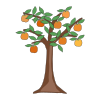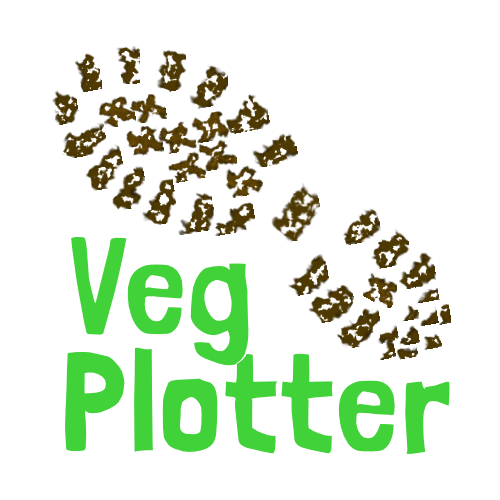Persimmons are a unique and delicious fruit renowned for their sweet, honey-like flavour and vibrant orange hue. Native to Asia, particularly China and Japan, they have a rich cultural and culinary significance. These fruits belong to the genus Diospyros, which translates to "divine fruit," a nod to their heavenly taste.
Varieties
Persimmons primarily come in two popular varieties:
Hachiya: Shaped like an acorn, this variety is astringent and should only be eaten when fully ripe, as its unripe state contains high levels of tannins, which can leave a dry, puckering sensation in the mouth. When ripe, its flesh becomes jelly-like and sweet.
Fuyu: Squat and tomato-shaped, this non-astringent variety can be enjoyed both firm and soft, offering a mild and slightly crisp texture when less ripe.
Nutritional Benefits
Persimmons are rich in vitamins and antioxidants, particularly vitamin A, vitamin C, and dietary fibre. They also contain beneficial compounds such as flavonoids and tannins, which may support heart health, improve digestion, and provide anti-inflammatory properties.
Culinary Uses
Persimmons can be enjoyed in numerous ways:
Fresh: Eaten raw as a snack or dessert, often peeled for a smoother texture.
Cooked: Added to baked goods like cakes, bread, or puddings for natural sweetness.
Dried: Used as a portable snack or in teas, a common preparation in many Asian cultures.
Salads and Savoury Dishes: Thin slices of persimmons pair wonderfully with arugula, goat cheese, and nuts in salads, or even as a topping for roasted meats.
Season and Selection
Persimmons are a fall and early winter fruit, often appearing in markets from October to December. When selecting persimmons, look for smooth, vibrant skin without blemishes. Hachiya persimmons should feel soft to the touch when ripe, while Fuyu can be firm but should yield slightly under gentle pressure.
Whether you prefer them as a quick snack, a festive dessert, or a unique ingredient in savoury dishes, persimmons are a versatile and delightful addition to your table, celebrating the flavours and colours of autumn.
How To Grow
Growing persimmons can be a rewarding experience, as these trees are relatively low-maintenance and yield delicious fruit. Whether you’re planting in your backyard or starting an orchard, here's a guide to help you grow persimmons successfully.
-
Choose the Right Variety
There are two main types of persimmons to consider:
American Persimmons (Diospyros virginiana): Hardy and well-suited to colder climates, they can thrive in USDA Zones 4–9. Their fruit is smaller but very sweet when fully ripe.
Asian Persimmons (Diospyros kaki): Better suited for warmer climates (USDA Zones 7–10), these produce larger, sweeter fruits and are available in astringent (e.g., Hachiya) and non-astringent (e.g., Fuyu) varieties.
-
Select a Planting Location
Persimmons thrive in well-drained, loamy soil with a pH of 6.0–7.5. Choose a site with:
Full Sunlight: At least 6–8 hours of direct sunlight daily.
Good Air Circulation: Avoid low-lying areas prone to frost pockets or poor air movement.
-
Planting the Tree
Timing: Plant persimmons in late winter or early spring while the tree is dormant.
Spacing: Allow 20–25 feet between trees for standard varieties, or 10–15 feet for dwarf varieties.
Planting Steps:
Dig a hole twice as wide and slightly deeper than the root ball.
Gently loosen the roots and place the tree in the hole, ensuring the graft union (if applicable) is above soil level.
Backfill with soil, tamping lightly to remove air pockets.
Water thoroughly to settle the soil.
-
Care and Maintenance
Watering: Keep the soil consistently moist during the first year. Once established, persimmons are drought-tolerant but benefit from regular watering during fruiting.
Fertilizing: Apply a balanced fertilizer (10-10-10) in early spring and midsummer. Avoid over-fertilizing, as this can reduce fruit production.
Pruning: Prune in late winter to shape the tree, remove dead or diseased branches, and maintain airflow. Minimal pruning is needed for mature trees.
Mulching: Apply a 2–4 inch layer of organic mulch around the base to retain moisture, regulate soil temperature, and suppress weeds. Keep mulch 6 inches away from the trunk to prevent rot.
-
Pollination
Some persimmons, like Fuyu, are self-pollinating, meaning you only need one tree for fruit production. Others, like American varieties, may require a male and female tree for pollination. Check your variety's requirements when planting.
-
Pest and Disease Management
Persimmons are relatively pest- and disease-resistant. However:
Common Pests: Watch for scale insects, mealybugs, and aphids.
Diseases: Prevent fungal issues like leaf spot or crown rot by ensuring proper drainage and airflow.
Wildlife: Protect young trees from deer or rodents with fencing or tree guards.
How/When To Harvesting
Harvesting persimmons at the right time ensures the best flavour and texture. Here’s how to pick and handle these fruits correctly, whether they are astringent or non-astringent varieties.
-
Know When to Harvest
Timing is crucial to enjoy persimmons at their peak.
Astringent Varieties (e.g., Hachiya): Harvest when the fruit is fully coloured and soft, with a jelly-like texture. These persimmons are bitter when unripe due to high tannin levels.
Non-Astringent Varieties (e.g., Fuyu): Harvest when the fruit is fully coloured but still firm. These can be eaten immediately or allowed to soften for a sweeter taste.
-
Check for Signs of Ripeness
Colour: The skin should be a rich, deep orange or red-orange, depending on the variety.
Texture:
Astringent: The fruit should feel soft, almost squishy, and the skin may look slightly translucent.
Non-Astringent: The fruit can be firm or slightly soft.
Ease of Detachment: Ripe persimmons will often detach easily from the tree with minimal force.
-
Tools and Materials Needed
Pruning shears or scissors for clean cuts.
A basket or shallow container to collect the fruit without bruising.
Gloves (optional) to protect your hands from sap or sticky juices.
-
Harvesting Steps
Choose a Dry Day: Harvest persimmons on a dry day to prevent moisture-related damage or disease.
Handle Gently: Use your hands to gently grasp the fruit. Avoid squeezing to prevent bruising.
Cut the Stem:
Use pruning shears or scissors to cut the stem about 1–2 inches above the fruit.
Leave the green calyx (the leafy top) attached for better preservation.
Avoid Pulling: Don’t twist or pull the fruit directly from the tree, as this can damage the branch or the fruit.
-
Post-Harvest Care
Sort and Inspect: Remove any damaged or overly soft fruit from the batch.
Storage:
Astringent Persimmons: Store at room temperature until fully ripened, then refrigerate for up to 2–3 days or freeze for longer storage.
Non-Astringent Persimmons: Store in a cool, dry place for about a week or refrigerate to extend shelf life.
Ripening Tip: To speed up ripening, place astringent persimmons in a paper bag with a banana or apple. These fruits emit ethylene gas, which accelerates ripening.
-
Handling Fallen Fruit
If fruit has fallen naturally from the tree:
Inspect for bruising or damage.
Use immediately for cooking or freezing, as fallen fruit ripens quickly and is more perishable.
-
Safety Precautions
Use a ladder or fruit picker for high branches to prevent accidents.
Be mindful of wildlife, as birds and animals also enjoy ripe persimmons.
By harvesting your persimmons with care and attention, you can enjoy their luscious flavour and preserve their quality for fresh eating or use in recipes.


